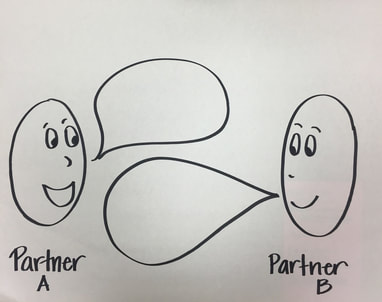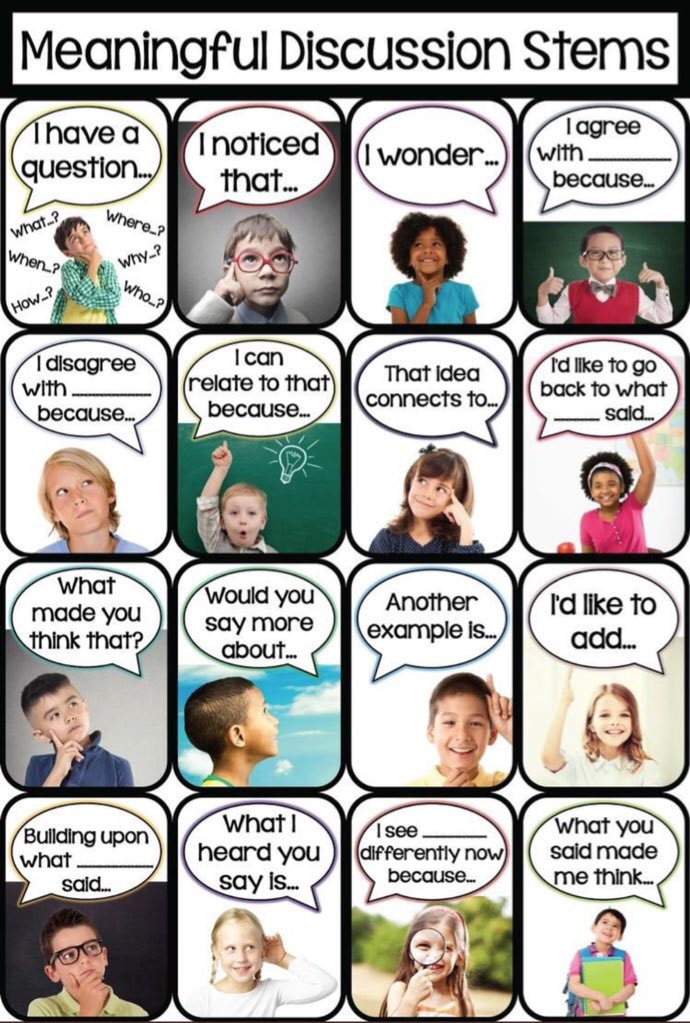 Have you ever walked into a classroom and heard a teacher say, "I love how quiet you all are. Keep it up."? Quiet classrooms are dangerous for English language learners and most other students as well. Talk is key to learning. If the goal is to lift the level of language, how can we do that in a quiet classroom? A lot of research has been done on the amount of talk that takes place in an average classroom. Research has found that ELLs spend less than 2% of their school day improving their academic language! Unfortunately, the one doing the most talking is usually the teacher. And as we know...the one talking is the one learning. When we talk, we process, we negotiate, we internalize. Teachers are doing a lot of the work and students are zoning out. To shift this workload and learning, students need to do the talking. As teachers, we should give students engaging topics and essential questions to discuss and turn it over to them. There are many ways to achieve a room full of students who are talking about the work. But I think as teachers, our biggest fear is that they won't talk about the work...they will get off topic or they won't talk at all. A secondary fear is that there is so much curriculum to cover that if we let them talk, it won't get covered. Here are 3 ways to ensure that your classroom talk is effective. ONE. Be explicit in the talk structure and routine. Teach your students HOW to hold the talk conversation so that it is accountable. Students of all ages need to hear the teacher say that partners need to sit facing one another. They need to know that one person talks while the other(s) listen(s) and nod(s). They will need to see how the partners pass the conversation to one another. For example, when I'm finished talking, how do I let my partner know it's his/her turn? I might say, "What do you think?" In this day in age, kids are entrenched in technology, social media, and this lack of face to face communication leads us to the need for explicit instruction about conversation. Modeling what you expect is important. Model, model, model. Show your students what the conversation will look like and what it should not look like. TWO. The question or topic you pick is key to the success of the conversation. If your district utilizes unit plans, they will include essential questions and enduring understandings. Those are excellent for selecting what you want your students to discuss. Just be sure that you have already exposed your students to the information. They can't talk about questions that they haven't studied yet. If your district does not use unit plans, you can look at the TEKS or state standards that your lesson is addressing. Take the standard and turn it into a question. Don't change the vocabulary in the question to make it "easier" for them to understand. Instead, teach them the vocabulary using visuals and synonyms if you need to. Once you have a question in mind, post it visually for your students. Otherwise, once you ask kids to discuss with their partner, you'll hear, "What are we supposed to talk about?" and then they will get off topic. Posting the question ensures that two modalities have been addressed: verbal/oral and visual. Those kids that need to hear it, heard it. Those kids that need to see it and read it, can! THREE. Give them sentence stems or starters to propel their thoughts. ELLs are cognitively capable of answering questions and thinking deeply. They lack the English language. Sentence stems provide a scaffold and support for the structure of the sentence. Remember when you were first learning to ride a bike? Someone ran behind you holding the seat and keeping you balanced. Then when you were ready, they let go. That's what stems are like. Just like when learning to ride a bike, we all need a different amount of support. With beginner and intermediate ELLs, stems will be more basic. They also benefit from a word bank or visual/picture. Advanced and advanced high ELLs still need stems too. Their stems can be longer and push them to explain more.
If you are looking for more to read about talk, here are a few excellent resources:
 Talking Heads Elementary Example by M. Alvaro Talking Heads Elementary Example by M. Alvaro Talking Heads
Susie Hughes
9/3/2020 03:20:27 pm
I absolutely love your Discussion Stem poster! Is it possible to get a downloadable copy of "Meaningful Discussion Stems" poster.
Elizabeth Kulesza
6/18/2022 07:41:32 am
I was thinking the same thing. The visuals with each prompt are great! 3/7/2021 02:51:09 pm
We really need to start every year out with routines, modeling and teaching our students HOW to hold conversations. It's important to give them sentence stems to get them talking and pick out the best questions to discuss. Comments are closed.
|
Categories
All
|



 RSS Feed
RSS Feed
